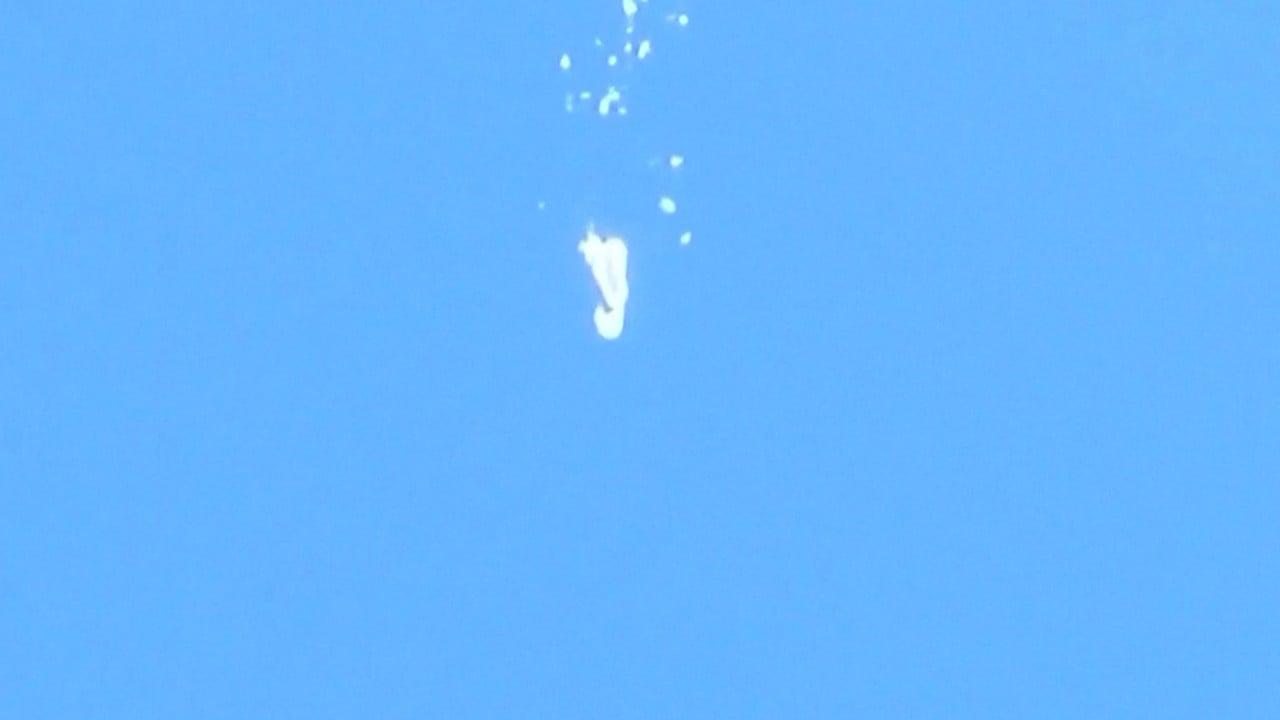
In a recovery operation that began Monday morning, US Navy ships are using sonar to help map the downed balloon’s debris field, an area of about 1.5km by 1.5km (1 mile by 1 mile), according to General Glen VanHerck, commander of Norad, the joint US-Canadian air defence operation, and the US Northern Command.
They have also blocked off an area of 26 square kilometres (10 square miles) on the assumption that the debris might contain explosives. The Air Force aimed to bring the balloon down six miles off the coast based on Nasa’s advice that the debris field might stretch that far, VanHerck said.
He added that military officials “did not associate the potential of having explosives” with the possibility that the balloon carried weapons it could drop on US targets.
Representative Michael Waltz, a Florida Republican and member of the House Armed Services Committee, told The Washington Post that military officials had notified Congress that Chinese balloons were spotted near US territory several times – near Florida and Texas – during the previous administration of Donald Trump.
Trump and his former national intelligence director, John Ratcliffe, denied earlier comments by US Defence Secretary Lloyd Austin that similar balloons had transited the United States during Trump’s presidency, underscoring how politically contentious the incident had become for Biden domestically.
Facing questions on CNN on Sunday, US Transportation Secretary Pete Buttigieg said the way Biden handled the situation brought it to a close without loss of life or property damage. However, he dodged a question about the likelihood that China had managed to gather intelligence from the balloon before it was shot down.
“I’m sure there’s a similar presumption about what spy satellites do,” he said.
In his briefing, Kirby defended Biden’s decision to wait several days to shoot it down, from the time the balloon entered US airspace over Montana until it was off the coast of South Carolina.
Observation of the craft’s maneuverability and other capabilities sharpened the US military’s understanding of China’s spying efforts, he said.
Kirby said that the balloon had propellers and a rudder, which gave the craft limited ability to change speed and direction, but that “the most important navigational vector” was the high-altitude jet stream winds.
“The time that we had because the president decided they wouldn’t shoot it down until we could do so safely, and that meant over water – that afforded us a terrific opportunity to gain a better understanding to study the capabilities of this balloon,” Kirby said.
“We believe we mitigated the intelligence capability of the balloon, at the same time improving our ability to collect intelligence and information from it,” he added.
US government officials have been unequivocal that the balloon was surveilling US military installations.
Beijing has insisted that the unmanned airship was for civilian research, mainly meteorological purposes, and has said the same about another Chinese balloon traversing South America.
Chinese Foreign Ministry spokeswoman Mao Ning said the balloon over South America had “seriously strayed from its planned route”. Photo: EPA-EFE
Speaking of the second balloon, Chinese Foreign Ministry spokeswoman Mao Ning said in Beijing on Monday that “this airship seriously strayed from its planned route, and accidentally entered the skies over Latin America and the Caribbean”.
Colombia first announced the balloon’s “incursion” into its airspace on Saturday, and said that officials in its air force were investigating the matter “in coordination with different countries and institutions to establish the origin of the object”.


